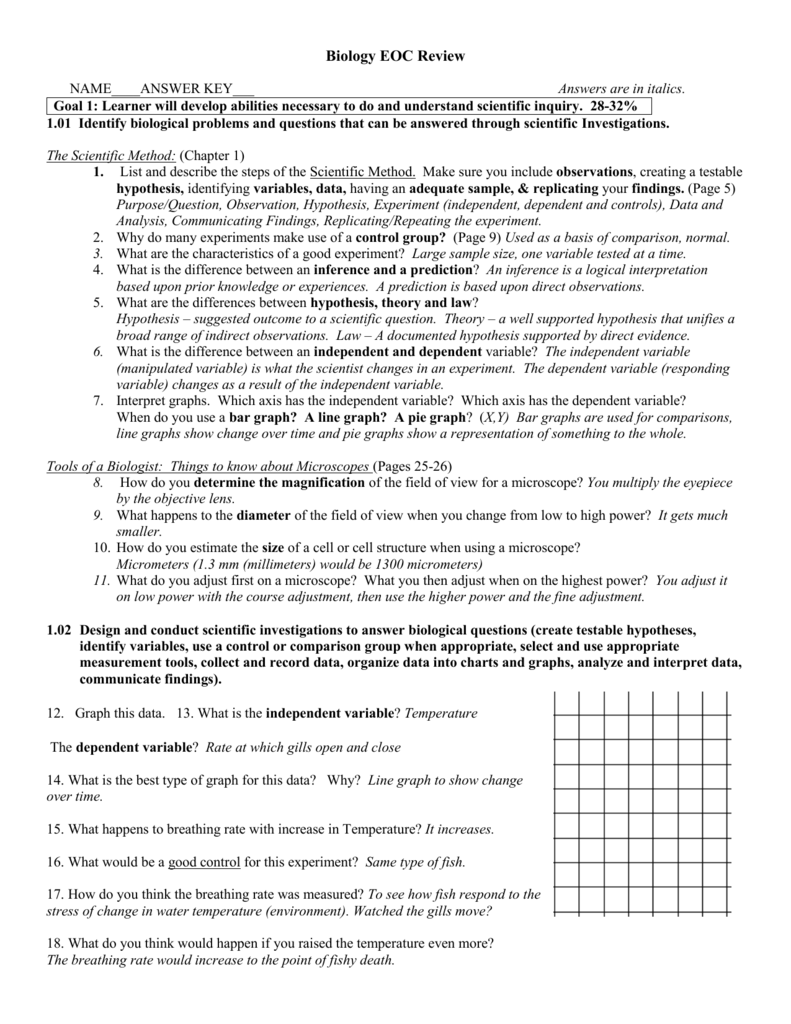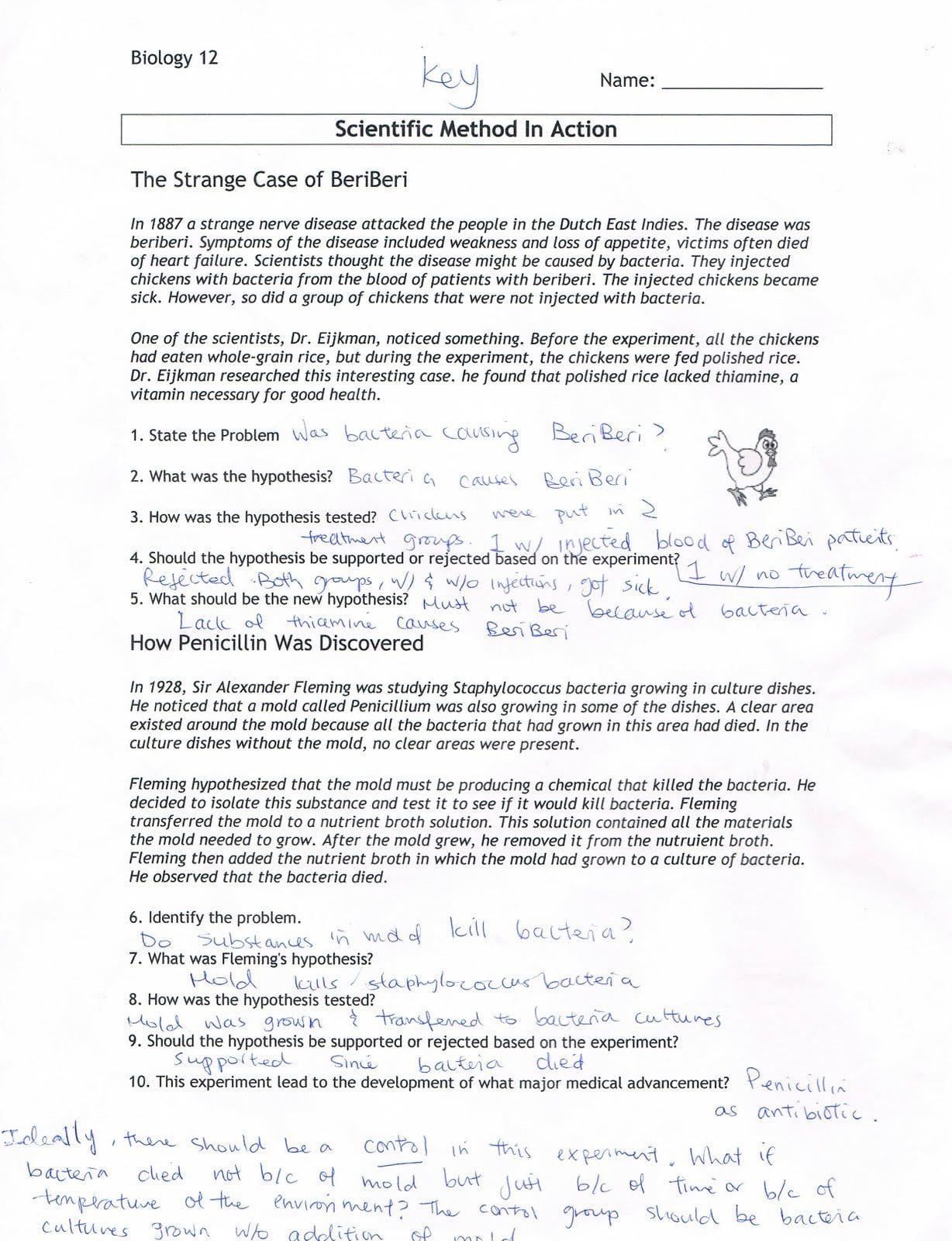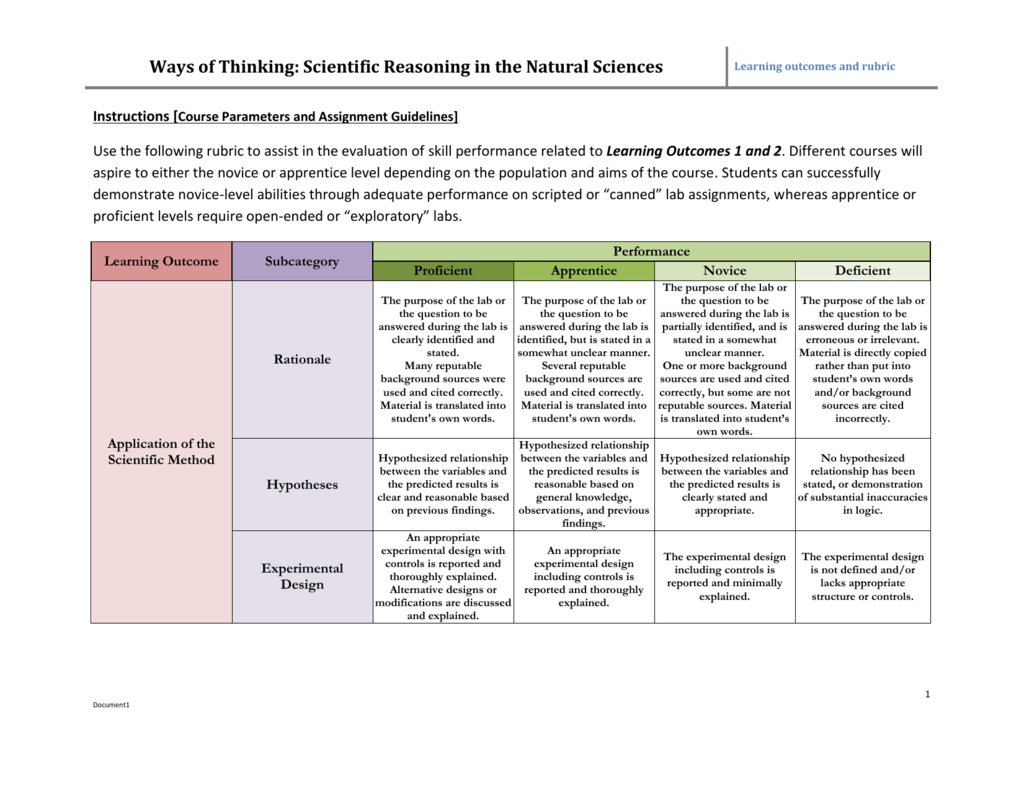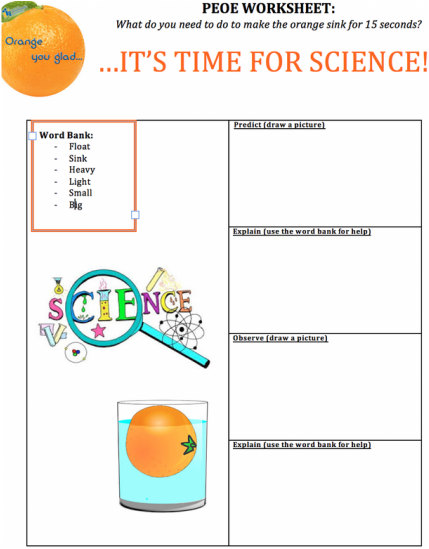44 inquiry into scientific thinking worksheet answers
Density Column Lab - Part 1 - Activity - TeachEngineering Possible answers: Weight, mass, area, volume, density.) We are going to focus on mass and density in today's activity. Who can explain to me what density means? Or how to calculate density? (Listen to student responses.) The density of an object is a measure of the mass per volume. study.com › academy › lessonHow to Formulate Historical Questions - Video & Lesson ... Nov 30, 2021 · History as a 'Science' This may surprise you, but historians are actually scientists. Yep, history is a science. If you major in history in most colleges, you will receive a B.S., a bachelor's ...
DP Biology: Cells: Activities for Learning - ThinkIB These learning activities cover all of the understandings and skills in the IB guide for this topic. Lesson plans include resources to use on an interactive whiteboard and worksheets to print. There is a mix of laboratory work, theory lessons, and assessment materials with model answers. This simple sheet sets out the learning objectives, essential questions and some ideas for assessment for ...

Inquiry into scientific thinking worksheet answers
Fair Project Ideas, Answers, & Tools Free Topic Selection Wizard, science fair project ideas, step by step how to do a science fair project, Ask an Expert discussion board, and science fair tips for success. DP Biology: Photosynthesis Experiments - ThinkIB Photosynthesis Experiments. This activity introduces a simple method of measuring the rate of photosynthesis and leads students to design their own investigation of a factor which affects it. A second activity illustrates how the same could be achieved using a simulation. In a final activity using Scratch a more open ended model is introduced ... 1. Choosing a Research Problem - Organizing Your Social Sciences ... A research problem is the main organizing principle guiding the analysis of your paper. The problem under investigation offers us an occasion for writing and a focus that governs what we want to say. It represents the core subject matter of scholarly communication, and the means by which we arrive at other topics of conversations and the discovery of new knowledge and understanding.
Inquiry into scientific thinking worksheet answers. Mr. Jones's Science Class Matter: Atoms and Properties - Open Response Question 3. Force and Motion - Open Response Question 3. Forms of Energy - Open Response Question 1. Forms of Energy - Open Response Question 2. Earth's Structure & Natural Processes - Open Response Question 1. What is Scientific Investigation? - Definition, Steps & Examples Scientific investigation is a quest to find the answer to a question using the scientific method. In turn, the scientific method is a systematic process that involves using measurable observations... Insulation Materials Investigation - Activity - TeachEngineering Insulation Materials Investigation Worksheet blank paper and pencils To share with the entire class: assortment of materials to test as possible insulation materials, such as tissues, newspaper, cotton balls, Styrofoam, aluminum foil, cloth, shaving cream, petroleum jelly, snack foods (such as cheese curls), etc. Worksheets and Attachments positivepsychology.com › appreciative-inquiry-tools4 Appreciative Inquiry Tools, Exercises and Activities Jul 23, 2021 · Appreciative inquiry is about looking for the best in people – in the way they work, they live, and they behave. Initially, appreciative inquiry (AI) was a “fundamental shift in the overall perspective of organizational development that took into account the entire human functioning – including strengths, possibilities, and success.”
mhspanthers1.weebly.com › uploads › 5/3/7Biology EOC review - MILTON HIGH SCHOOL Here are some important questions to ask yourself when developing your study skills. Your answers may help you define some areas in which you need to make some improvements. 1. How would you describe yourself as a student? Study skills can actually be divided into separate target areas: time management, organization, and active participation. DP Biology: Teaching Materials - ThinkIB Topic 2 - Molecular biology revision activities. exercise. A3 revision worksheet about the Cells topic. Topic 1 - Cells revision activities. exercise. A3 revision worksheet for Option A SL topics. Option A - Neurobiology - Revision activities. exercise. A3 revision worksheet for Option C Ecology HL topics. › p › this-page-listsResourceaholic: Number Estimating length using scientific notation - Mathematics Assessment Project; Standard form exam questions - mathsteaching.wordpress.com; Standard form collect a joke - danwalker on TES; Large and Small - student sheet and teacher notes - Nuffield Foundation; Standard form worksheet - Maths4Everyone on TES; Standard form GCSE revision ... Wave Properties Slinky Lab Worksheet Answers encourage students to integrate basic science concepts and skills into everyday life. Phy. Lab and Pocket Lab Wk/Sheets Phy:P&P-Zitzewitz 1998-07 The Nature of Technology-Michael P. Clough 2013-09-03 How does technology alter thinking and action without our awareness? How can instantaneous information access impede understanding and wisdom?
EOF The Research Problem/Question - University of Southern California A research problem is a definite or clear expression [statement] about an area of concern, a condition to be improved upon, a difficulty to be eliminated, or a troubling question that exists in scholarly literature, in theory, or within existing practice that points to a need for meaningful understanding and deliberate investigation. Subject Guides: Scientific Method: Step 6: CONCLUSION Step 6: Conclusion. Finally, you've reached your conclusion. Now it is time to summarize and explain what happened in your experiment. Your conclusion should answer the question posed in step one. Your conclusion should be based solely on your results. Think about the following questions: 7th Grade Science Quiz Questions And Answers - ProProfs Questions and Answers 1. Which of these diseases is not caused by improper disposal of sewage? A. Cholera B. Heart Attack C. Jaundice D. Typhoid 2. What are the products of anaerobic respiration in yeast? A. Alcohol and Carbon dioxide B. Carbon dioxide and glucose C. Oxygen and alcohol D. Glucose and oxygen 3.
Step 1: QUESTION - Scientific Method - Subject Guides at HCC Library Step 1: QUESTION. The first step of the scientific method is the "Question." This step may also be referred to as the "Problem." Your question should be worded so that it can be answered through experimentation. Keep your question concise and clear so that everyone knows what you are trying to solve.
DP Biology: Practical Scheme of Work - ThinkIB There are no other assessed pieces of practical work. The great strength of being able to design your own programme, most of which does not have to be assessed, is that practical work can be fully integrated into good biology teaching. The new PSOW allows the teacher to choose the most suitable experiments for their students.
Renewable Energy Living Lab: Energy Experts - Activity After the worksheet is completed, come together as a class to present solutions and discuss. Vocabulary/Definitions biomass: Biological (organic) material from living or dead organisms (especially plants) used as an energy source. Biomass used for electricity generation varies widely by region.
Engineering: Simple Machines - Lesson - TeachEngineering The scientific definition of work is the amount of force that is applied to an object multiplied by the distance the object is moved. Thus, work consists of force and distance. Each job takes a specific amount of work to finish it, and this number does not change. Thus, the force times the distance always equals the same amount of work.
Chromatography Lab - Activity - TeachEngineering (Answer: The separation depends on how soluble the ink in the marker is in either water or alcohol. The ink in the black marker is not soluble in water and therefore does not separate. This is also why this type of marker is considered a "permanent" marker—because it is water-insoluble and thus cannot be washed off using water!
DP Biology: Calculating Magnification and Size - ThinkIB In this activity students are shown how to calculate magnification and image sizes using scale bars. Then they learn how to calculate specimen size using magnification. The resources can be projected on the interactive whiteboard and there is a student worksheet with some extra examples for students to practice. There is also a short video screencast for this activity.How do we:The three ...
positivepsychology.com › mindset-coachingYour Mindset Coaching Guide: Best Questions, Courses, & Tools Jan 19, 2022 · A useful starting point for tapping into a client’s mindset is the miracle question.. Drawn from the therapeutic practice of solution-focused therapy, the miracle question invites clients to imagine how their lives would be better if they could instantly resolve their primary problems (Strong & Pyle, 2009).
gizmos.explorelearning.com › indexGrowing Plants Gizmo : Lesson Info - ExploreLearning Investigate the growth of three common garden plants: tomatoes, beans, and turnips. You can change the amount of light each plant gets, the amount of water added each day, and the type of soil the seed is planted in. Observe the effect of each variable on plant height, plant mass, leaf color and leaf size. Determine what conditions produce the tallest and healthiest plants. Height and mass ...
1. Choosing a Research Problem - Organizing Your Social Sciences ... A research problem is the main organizing principle guiding the analysis of your paper. The problem under investigation offers us an occasion for writing and a focus that governs what we want to say. It represents the core subject matter of scholarly communication, and the means by which we arrive at other topics of conversations and the discovery of new knowledge and understanding.
DP Biology: Photosynthesis Experiments - ThinkIB Photosynthesis Experiments. This activity introduces a simple method of measuring the rate of photosynthesis and leads students to design their own investigation of a factor which affects it. A second activity illustrates how the same could be achieved using a simulation. In a final activity using Scratch a more open ended model is introduced ...








0 Response to "44 inquiry into scientific thinking worksheet answers"
Post a Comment